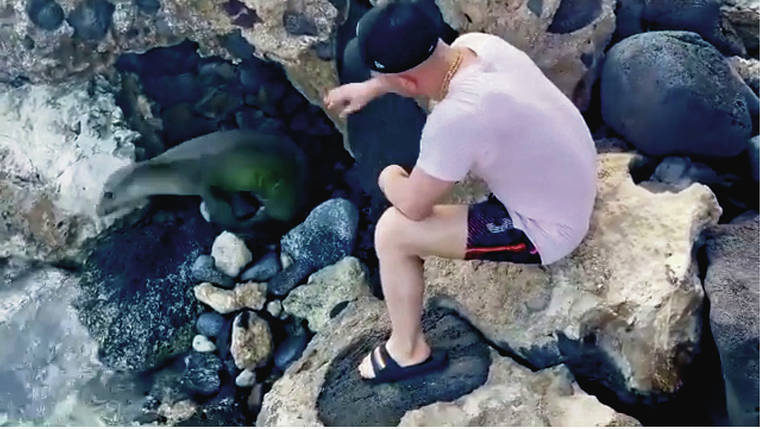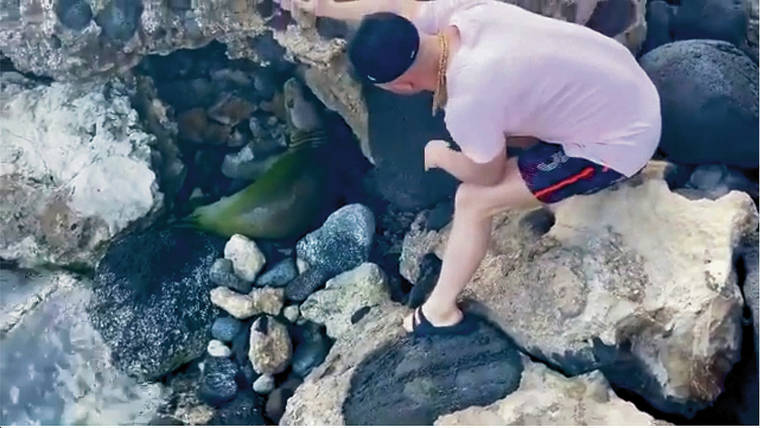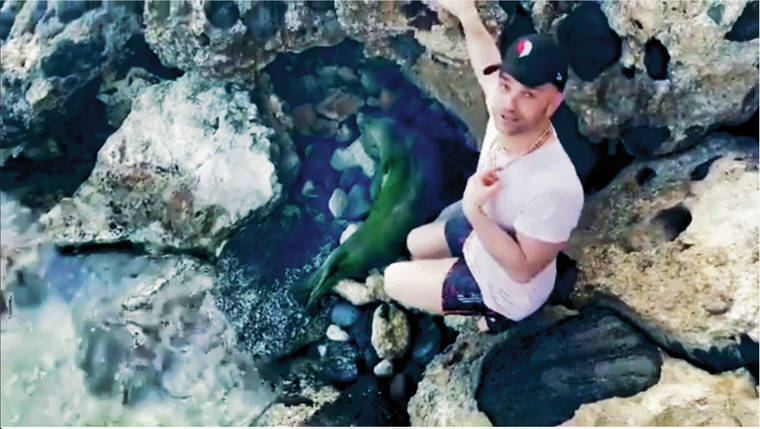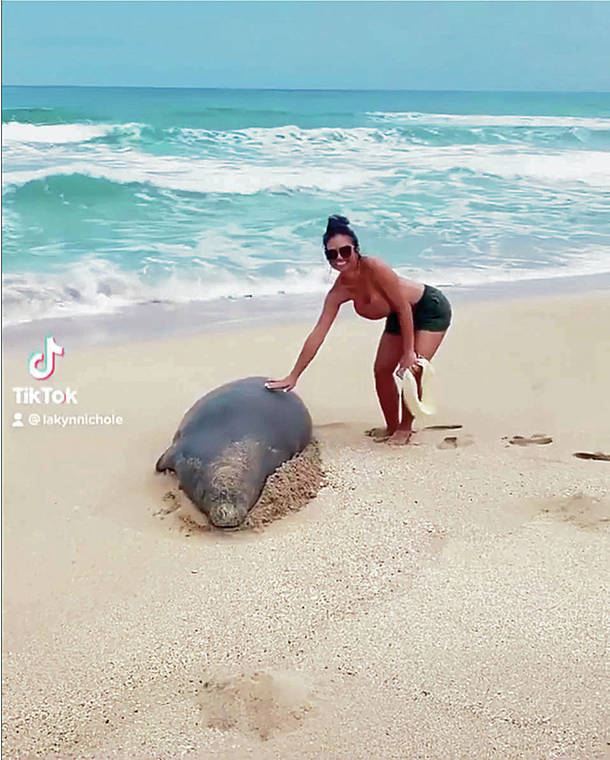Visitors who touched monk seal fined $500

Alex Magala posted a video online of himself touching a resting seal. He also will have to pay a $500 fine.

Alex Magala posted a video online of himself touching a resting seal. He also will have to pay a $500 fine.

COURTESY INSTAGRAM
Visitor Alex Magala is seen touching a Hawaiian monk seal.

SCREEN GRAB VIA TIK-TOK
A visitor to Kauai known only as Lakyn touched a Hawaiian monk seal recently, only to be chased away.




A federal agency has fined visitors $500 each in two separate cases for unlawfully touching a resting endangered Hawaiian monk seal.
The National Oceanic and Atmospheric Administration’s Office of Law Enforcement initiated investigations in the cases and found the visitors to be in violation of the Endangered Species Act, said spokesman Dominic Andrews.
Two separate videos that show two visitors touching a monk seal sparked anger among the public in recent weeks after the videos were widely circulated across social media.
Officials say the issue is repeated, close interactions that are happening frequently in Hawaii and cause harm to the protected species. “Close encounters with people can disrupt their natural behavior that they need to survive,” said Adam Kurtz, marine wildlife management coordinator of NOAA Fisheries’ Pacific Islands region.
One of the cases involves a Louisiana woman who was on her honeymoon with her husband on Kauai after they got married on Maui. A TikTok video showed a woman who goes by the online name Lakyn posing next to a resting monk seal on June 7. Once she touched the seal, it snapped at her.
NOAA issued her a summary settlement of $500 for the violation.
Don't miss out on what's happening!
Stay in touch with breaking news, as it happens, conveniently in your email inbox. It's FREE!
In a July 12 phone interview with the Star-Advertiser, Lakyn’s husband, Stephen, apologized profusely and agreed to pay the fine. He said they love Hawaii and respect the culture and did not mean to offend anyone.
The couple had received death threats after the video went viral on social media, and requested their surname not be published.
The federal agency also issued a $500 fine to visitor Alex Magala after he posted a video online that shows him touching a resting seal on a rocky shoreline. It’s unclear when the encounter took place; however, his Instagram page revealed he visited Oahu in May.
The video showed Magala approach and touch the resting seal. The mammal is seen snapping its tail up, causing Magala to step back. Soon after, the visitor again approaches the seal, at which time the seal barks at him. The mammal then entered the water and swam away.
Magala apologized for his actions in a recent Instagram post.
Andrews said they take these incidents seriously.
No injuries were reported in either case.
Kurtz said repeated, close interactions with people adversely affect monk seals’ natural behavior such as resting, feeding and caring for a pup. Interactions with people can deplete precious energy seals needs to survive, Kurtz said. “It can cause added physiological stress. It can lower reproductive success.”
Protected by state and federal laws, Hawaiian monk seals are critically endangered species with only about 1,100 seals in the Northwestern Hawaiian Islands and 300 seals in the main Hawaiian Islands.
It is illegal to touch, harass, injure or kill a Hawaiian monk seal. Violators face penalties of imprisonment or fines.
Monk seals are usually spotted resting onshore after foraging for food in the water or swimming from place to place. Seals also molt about once a year and spend a few days at a time onshore to shed the outer layer of their skin and fur, Kurtz said.
What’s more, a pup and its mother spend about six to eight weeks on a beach where the nursing mother makes sure the pup is strong enough to be on its own before she leaves.
“The beach is an essential part of the monk seal’s habitat,” Kurtz added. “So when they’re out on shore, it’s important for folks to keep a safe distance away.”
NOAA recommends the public to maintain a distance of at least 50 feet to view monk seals and 150 feet to view a pup with its mother.
Kurtz said it’s understandable that visitors and residents alike become excited when they see a monk seal or other marine wildlife such as a threatened Hawaiian green sea turtle on the beach.
Enthusiasts who seek to capture that rare marine wildlife sighting can do so from a safe, respectful distance. One way is using your hands and fingers to create a heart shape and centering the monk seal or sea turtle within the heart from a distance.
NOAA also recommends maintaining a distance of at least 10 feet to view Hawaiian green sea turtles and 50 yards for dolphins and small whales. The public also must maintain at least 100 yards while viewing humpback whales.
To report any illegal activity of wildlife harassment, call NOAA’s marine wildlife hotline at 888-256-9840 or the state Department of Land and Natural Resources’ enforcement hotline at 643-DLNR.




